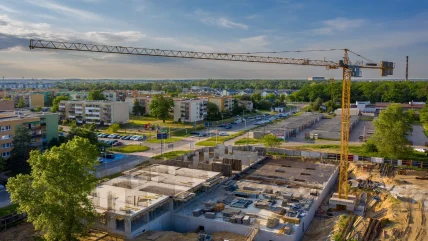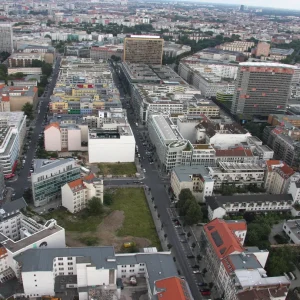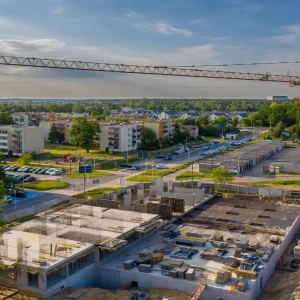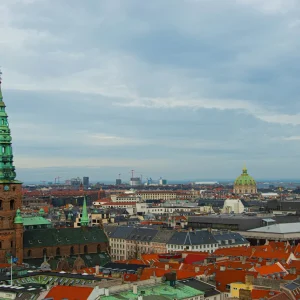
Biodiversity loss and ecosystem collapse are pressing global concerns with profound implications for urban areas. Urban policy must adapt to these environmental challenges to ensure sustainable and resilient cities. This article explores the significance of biodiversity and ecosystems, the consequences of their decline, and how urban policy can respond effectively.
Understanding Biodiversity and Ecosystem Services
What is Biodiversity?
Biodiversity refers to the variety of life on Earth, encompassing species diversity, genetic diversity, and ecosystem diversity. It is essential for ecosystem resilience, human health, and the overall functioning of our planet.
Ecosystem Services
Ecosystem services are the benefits that humans derive from natural ecosystems. These include:
- Provisioning Services: Such as food, water, and raw materials.
- Regulating Services: Including climate regulation, flood control, and disease regulation.
- Supporting Services: Such as soil formation, photosynthesis, and nutrient cycling.
- Cultural Services: Encompassing recreational, spiritual, and educational benefits.
The Role of Urban Areas
Urban areas, home to over half of the world’s population, are both significant contributors to and victims of biodiversity loss and ecosystem degradation. Cities can affect surrounding ecosystems through pollution, land-use change, and resource consumption. Conversely, urban areas can suffer from reduced ecosystem services, impacting quality of life and increasing vulnerability to environmental hazards.
The Consequences of Biodiversity Loss and Ecosystem Collapse
Climate Change and Extreme Weather
Biodiversity loss exacerbates climate change by reducing the capacity of ecosystems to sequester carbon. Ecosystem collapse can lead to the loss of forests, wetlands, and other natural buffers, increasing the frequency and intensity of extreme weather events such as floods, hurricanes, and heatwaves. Urban areas are particularly vulnerable to these changes, which can cause widespread damage to infrastructure and endanger human lives.
Health Impacts
The decline of biodiversity affects human health directly and indirectly. The loss of medicinal plants, decreased air and water quality, and the disruption of natural disease control mechanisms can lead to increased morbidity and mortality. Urban areas may face heightened risks of infectious diseases as altered ecosystems create favourable conditions for pathogens and vectors.
Economic Costs
Biodiversity loss and ecosystem collapse impose significant economic costs. These include the loss of ecosystem services that support agriculture, fisheries, and tourism. Urban economies can suffer from increased healthcare expenses, higher costs for disaster recovery, and reduced attractiveness for investment and residency.
Social and Cultural Impacts
Ecosystem degradation can erode the cultural and recreational value of natural areas. In urban settings, this can lead to diminished community well-being, reduced opportunities for outdoor activities, and the loss of natural heritage sites.
Urban Policy Responses to Biodiversity Loss and Ecosystem Collapse
Green Infrastructure
Green infrastructure involves integrating natural systems and processes into urban design. This approach can mitigate the effects of biodiversity loss and support ecosystem services. Examples include:
- Urban Forests and Green Roofs: These can enhance biodiversity, improve air quality, and provide cooling effects.
- Wetlands and Rain Gardens: These can manage stormwater, reduce flood risk, and support wildlife habitats.
- Green Corridors: Connecting fragmented habitats to allow wildlife movement and enhance ecological connectivity.
Sustainable Land Use and Planning
Urban policy must prioritise sustainable land use to minimise the impact on ecosystems. This includes:
- Smart Growth: Promoting higher-density development and reducing urban sprawl to conserve natural habitats.
- Zoning Regulations: Implementing zoning laws that protect green spaces and restrict development in ecologically sensitive areas.
- Brownfield Redevelopment: Encouraging the reclamation and redevelopment of previously used industrial sites to reduce pressure on undeveloped land.
Climate Adaptation and Mitigation
Climate change adaptation and mitigation strategies are crucial for urban resilience. Policies can include:
- Renewable Energy Programmes: Supporting the adoption of solar, wind, and other renewable energy sources to reduce greenhouse gas emissions.
- Energy Efficiency Standards: Implementing building codes that promote energy efficiency and reduce carbon footprints.
- Urban Cooling Strategies: Increasing green spaces and using reflective materials to mitigate the urban heat island effect.
Public Engagement and Education
Public awareness and participation are vital for successful urban policy. Strategies include:
- Community Involvement: Engaging residents in biodiversity conservation projects, such as community gardens and tree planting initiatives.
- Environmental Education: Incorporating biodiversity and ecosystem education into school curricula and public outreach programmes.
- Citizen Science: Encouraging citizens to participate in monitoring and protecting local biodiversity through citizen science programmes.
Policy Integration and Collaboration
Effective urban policy requires coordination across multiple levels of government and sectors. This can involve:
- Interdepartmental Collaboration: Ensuring that urban planning, environmental protection, and public health departments work together to address biodiversity and ecosystem issues.
- Regional Cooperation: Collaborating with neighbouring municipalities and regions to address ecosystem challenges that cross administrative boundaries.
- International Partnerships: Engaging in global initiatives and learning from best practices in other cities around the world.
Case Studies
Singapore: A Model of Urban Biodiversity Integration
Singapore has successfully integrated biodiversity considerations into its urban policy through its “City in a Garden” vision. Key initiatives include:
- Park Connector Network: A network of green corridors that connect parks and nature reserves, enhancing biodiversity and providing recreational spaces.
- Skyrise Greenery Incentive Scheme: Encouraging the development of green roofs and vertical gardens to increase urban greenery and support wildlife.
- Bishan-Ang Mo Kio Park: A major urban park that incorporates naturalised river systems to manage stormwater, support biodiversity, and provide recreational opportunities.
Curitiba, Brazil: Innovative Urban Planning for Sustainability
Curitiba is renowned for its innovative urban planning and sustainability initiatives, which include:
- Integrated Transportation System: A world-class public transportation system that reduces car dependency and minimises urban sprawl.
- Green Exchange Programme: Encouraging recycling and waste management by exchanging recyclable materials for fresh produce, promoting environmental awareness and social equity.
- Urban Parks and Green Spaces: Extensive development of parks and green spaces that enhance biodiversity and provide residents with access to nature.
Future Directions
Enhancing Urban Resilience
As urban areas continue to grow, enhancing resilience to biodiversity loss and ecosystem collapse will become increasingly important. Future directions for urban policy could include:
- Nature-Based Solutions: Expanding the use of nature-based solutions to address urban challenges such as climate change, water management, and disaster risk reduction.
- Biodiversity Offsetting: Implementing policies that require developers to compensate for biodiversity loss by creating or restoring habitats elsewhere.
- Urban Agriculture: Promoting urban agriculture to increase food security, reduce carbon footprints, and support local biodiversity.
Leveraging Technology
Advancements in technology offer new opportunities for urban policy to address biodiversity and ecosystem challenges. Potential applications include:
- Geospatial Analysis: Using satellite imagery and geographic information systems (GIS) to monitor urban ecosystems and inform policy decisions.
- Smart City Technologies: Integrating sensors and data analytics to optimise resource use, reduce environmental impact, and enhance urban sustainability.
- Biodiversity Monitoring: Employing remote sensing, citizen science apps, and other tools to track and protect urban biodiversity.
Conclusion
The loss of biodiversity and the collapse of ecosystems pose significant challenges for urban areas. However, by adopting forward-thinking policies and practices, cities can mitigate these impacts and build more sustainable and resilient communities. Green infrastructure, sustainable land use, climate adaptation, public engagement, and policy integration are key strategies for addressing these issues. As urban areas continue to grow and evolve, it is imperative that urban policy keeps pace with the environmental challenges of the 21st century, ensuring that cities remain vibrant, liveable, and ecologically healthy.






